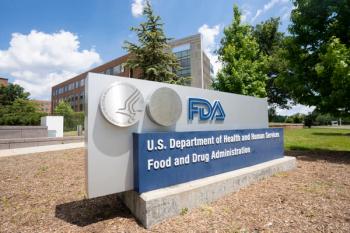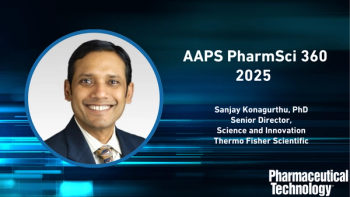
The benefits of outsourcing highly potent API manufacture
The main advantage of outsourcing highly potent API (HPAPI) manufacture is that it eliminates the need to invest in expensive containment infrastructure, which can also be complex to engineer, install and maintain.
The full version of this outsourcing feature can be read in the September issue of our digital magazine: http://www.pharmtech.com/ptedigital0910
The main advantage of outsourcing highly potent API (HPAPI) manufacture is that it eliminates the need to invest in expensive containment infrastructure, which can also be complex to engineer, install and maintain. Unless the pharma company has a broad portfolio of HPAPIs in its pipeline, such an infrastructure may not be fully utilised. As such, it can often be more cost effective to outsource activities that involve the use of HPAPIs.
Charlie Johnson is High Potency Business Manager at CARBOGEN AMCIS.
The safe synthesis of HPAPIs requires expertise in chemistry and a rigorous approach to Environmental Health and Safety (EHS). There are relatively few CMO organisations who offer this combination because of the high infrastructure costs, dedication of assets to high potency compounds and the more stringent GMP requirements to prevent cross contamination within multi-product assets. For many biotechs and emerging pharma companies — and even some CMOs — there is a broad reliance on external consultants to provide pharmacological and toxicological guidance, which contributes to the final categorisation of an API. Having in-house categorisation expertise for APIs and upstream intermediates ensures that higher cost containment infrastructure is only utilised where necessary, which in turn optimises the economics of HPAPI manufacture.
When producing HPAPIs, compliance with the specific GMP aspects is essential to prevent cross‑contamination between products, which could seriously harm patients. GMP necessitates the assessment of biological activities of the products produced to ensure that appropriate carry-over limits are set and adhered to during cleaning between products. Thus, the development of cleaning protocols, analytical controls and maintenance of safe working practices are key elements of the HPAPI business, and demand particular expertise. The maximum allowable carry‑over limits are often stringent and can require the development of very sensitive analytical methods to ensure that limits are met. This is a key difference compared with the manufacture of ‘standard’ APIs where it is normal to apply a less demanding default cleaning limit.
Despite the challenges of working with HPAPIs, there has been a significant increase in the number of companies marketing an ability to produce such products in recent years following the growth in innovation — particularly in the oncology Research and Development arena. However, many suppliers tend to operate at a very limited scale, despite the trend to increased HPAPI volume requirements, underpinned by the improved tolerability of many products, the growth in oral formulations and the increasing life expectancy of cancer patients. Some CMOs have anticipated this trend and invested in large scale manufacturing capacity. For instance, we have recently invested in new capacity in India.
Specialist facility needs
Segregated facilities for handling HPAPIs are required to mitigate potential cross contamination. From the worker protection perspective, there should be a complimentary mix of physical, human and procedural controls to provide a fail‑safe system of exposure control. At our company, this manifests itself as a “Protection Cascade” and includes the following controls:
- Compound categorisation and risk assessment to define inherent hazards, exposure potential and the necessary containment requirements.
- Full enclosure of the process within primary processing equipment.
- Secondary containment through the “room within room concept” with air pressure cascades operating towards the process.
- Procedural control is provided through standard operating procedures, training and health monitoring specific for work with highly potent compounds.
- Personal protective equipment, such as air-fed containment suits, are available and provide contingency protection in the event of a loss of primary containment or where extraordinary cleaning is required.
It is important to have appropriate controls across all manufacturing and testing operations to ensure protection of staff at all times. In particular, it is important to ensure that all operations involving the handling of solids (e.g., dispensing, discharge and particle size reduction) are rigorously controlled because these operations usually represents the greatest exposure potential to high potency intermediates and API at maximum concentration. Specially commissioned glove boxes are the most robust solution in this respect for materials in Category 4 (= most potent), although flexible containment solutions such as disposable charge bags, continuous liners and semi-rigid isolators with disposable product contact parts can also be adopted as interim measures or where lower potency products are being handled.
Air handling is also a key element in high potency facilities. Ensuring the appropriate internal circulation of clean air, without any risk of external exposure is an essential requirement to avoid the routine use of personal protective equipment, which in turn reduces the probability of human errors. Pressure cascades drawing air toward the process minimise this risk by ensuring any contamination is drawn back towards the process and away from the operators breathing area.
One factor that is easy to overlook is the control and containment of waste, such as liquid and gaseous waste streams. However, many outsourcing providers working with high potency compounds have now invested in abatement systems such as in-line gas scrubbers and HEPA filters to ensure that only uncontaminated air leaves the facility.
Planning to meet needs
Having in‑house expertise in pharmacology and toxicology allows the outsourcing provider to identify the most appropriate infrastructure for a given process. In some cases, the best option may be to produce upstream, non‑high potency steps using more conventional processes and infrastructure. This will minimise the number of steps run in containment and, consequently, reduce the cost of the overall process.
Because of the requirement to reach low levels of residual contamination in rinse solutions and on surfaces, cleaning is often a bottleneck in high potency facilities. However, this can be mitigated by designing the infrastructure in such a way that it can be cleaned in situ without the need for significant dismantling and manual cleaning of equipment.
In terms of planning, it is important to anticipate the needs of clients to ensure that appropriate resources are in place for future demands — whether for high potency products or not. If specific infrastructure is needed to support a project, this should be discussed well in advance with a client to ensure that demands on repeat projects can be met.
Changing demands
Oncology continues to lead the global drug development market representing 27% of all drugs in development, according to recent research from Citeline (The State of the Global Biopharma Research Industry). With many of these compounds being highly potent, the growth in this area is expected to continue. As described above, better tolerability of these products will increasingly lead to higher volumes of high potency API.
The other part of the oncology market that continues to demonstrate growth is drug conjugates, where the aim is to specifically target high potency toxins to certain tumours using active targeting vectors. If this area takes off, there will be a shortfall of suppliers who can perform the conjugation in containment infrastructure under controlled microbiological conditions.
There is also a more general trend for drugs to be active at lower dosages, with certain therapy areas such as CNS, musculoskeletal and respiratory conditions seeing increasing numbers of highly potent drugs. This increase may eventually drive further differentiation amongst providers of high potency development and manufacturing services due to increasing sensitivities about sharing high potency facilities across therapeutic classes, particularly where low dosed compounds with high genotoxic potential are concerned.
Newsletter
Get the essential updates shaping the future of pharma manufacturing and compliance—subscribe today to Pharmaceutical Technology and never miss a breakthrough.




